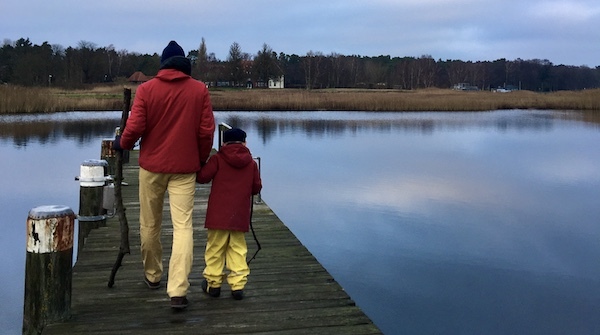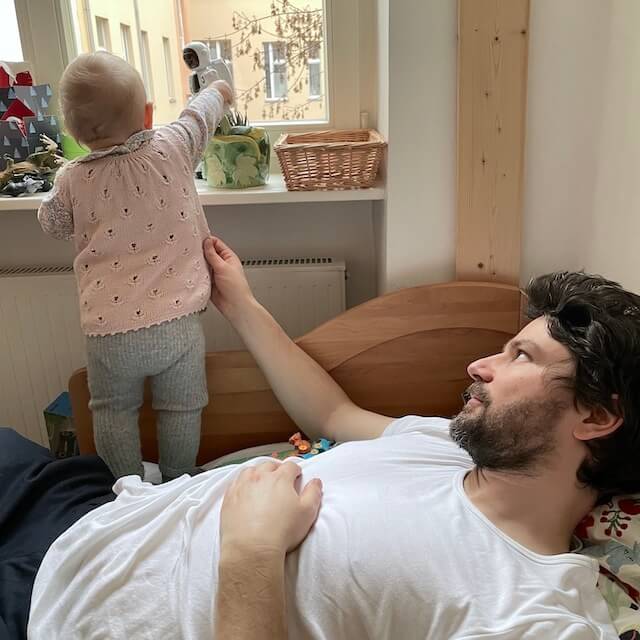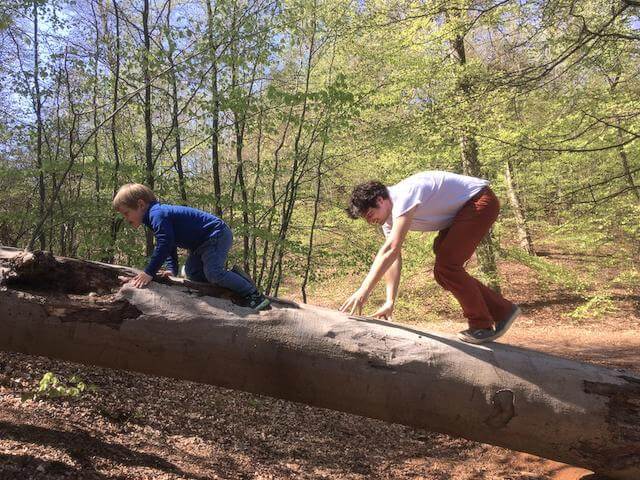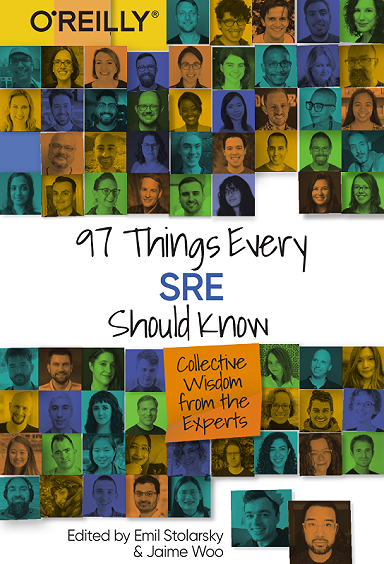
What I've learned managing engineers — and my own work-life balance — during the pandemic
I’m a director at Grafana Labs and work with three teams. Our whole engineering organization is roughly 150+ people strong, and includes developers, designers, and managers. I’m giving these specifics because Grafana Labs is no longer the small place I joined three years ago. Just in the last year we’ve doubled our headcount to almost 300 across the company, all with minimal hiccups (big thanks to our PeopleOps team). True to its Scandinavian roots, Grafana Labs has always championed a great work-life balance, and with its recent growth and success, there are more possibilities to get creative with organizing the work and putting people first. While I think that your mileage will definitely vary, there may be some commonalities in engineering management across our industry during this pandemic.
I’m writing these lines from my home in Berlin, and Germany is deep in the middle of its second wave. A mild lockdown has been followed by a decline in case numbers, and the country has started a (slow) vaccination program. However, most of my friends and colleagues are in the population group that will be vaccinated last.
Even though lockdowns in Germany have been relatively mild — trips to the forest are O.K. — the kindergartens are closed now. The situation is similar in the places where my teammates are located: other states in Germany, Poland, Slovakia, and the U.S. Their home situations vary wildly: Some are single and living alone, while others have two kids at home who are supposed to be homeschooled during the day. Some are taking care of their elderly family members or are living with a mental illness. Whatever the situation, the pandemic is taking a toll.
The support we’re getting at Grafana Labs has made a huge difference, though. There is a whole flurry of initiatives: personal health/work-life balance OKRs; company-wide shutdown days when everyone takes off so you don’t feel like you have to catch up with your colleagues when work resumes; a free Headspace membership; and an assistance program to provide counseling/mental health support.
I still remember the March 2020 all-hands meeting when we first discussed the impact of the pandemic on the company and the team. From the start, the senior leadership was in full support of putting our employees’ physical and mental health first. If this meant fewer hours worked, less code shipped, so be it.
Now, having this backing from the top is one thing, but to personally feel that it’s O.K. to finish early one day and support your spouse, is another thing. This is where engineering management during a pandemic starts.
Lockdowns, childcare, and expectations
Lockdowns are different from country to country, sometimes even city to city. Same with childcare. Our worst-hit UX designer has a wife who, as an early childhood education teacher, worked all day, while they cared for their two children at home. On days when he could focus for less than three hours, he felt particularly bad. The worst feeling for him was that he just recently started, and that he could not give his all. It really gnawed at him.
During the first wave, I wrestled with lockdown and childcare in my own way. I wrote off the mornings and took our kid out to the woods, and in the afternoon my wife took over. Grafana Labs as a company was starting to take off, and I worked afternoons and evenings, with the goal of keeping at least a 40-hour week. Some days were a big juggle, and I felt really stressed about putting in a full day. On others I had fewer interruptions, and those days felt like successes. But I did not see much of my wife. Needless to say, I missed her, and it even led to some conflicts at home.

What our UX designer and I — and others on the team as well — had in common was that even though we all knew we were in a pandemic, the expectations were high. No longer sky-high, but still high. In these exceptional times, the unmet expectations you place on yourself can be a source of frustration. And if this continues for a longer time, it can even lead to mental health issues.
Now we’re in the second wave, and something needed to change. Whenever Covid comes up in 1:1s, I make sure to point out that we’re all affected in some way, and that not working full hours is fine. In fact, if you are feeling that you are stressed about your situation at home, take some time off and support your partner. Sometimes an hour is enough; sometimes it needs a day. That hour or day is really not that important to your work as it is to your life. Long gone are the days of presenteeism. Worse, if you are mindlessly trying to get the hours in (added stress, lots of context switches, distractions), the quality of your work suffers. Then you will have delivered sub-par work AND it has taken a toll on you and your family, so please don’t do that.
Time management
To accommodate childcare and the semblance of a family life, I have shrunk my days. I work from 2-6pm and then have a 9-10pm late slot for U.S. calls. Of course, life during a pandemic does not always go as planned, so I decided to shrink those five hours per day even more, by mentally committing to only 4 hours per day. If I get those in, I feel good. Everything else is a bonus. There are days where I get more in; over the last week I was probably averaging 5 to 6 hours a day. The point is I only “need” to feel stressed if I don’t get those four hours in. This hack has made a huge difference to how I feel about my day compared to the first lockdown. I’m talking to my manager peers about this, and I’m encouraging my reports to try the same if they are struggling: Find a minimum amount you can commit to (even if it’s only two hours a day), and then also rearrange your calendar accordingly. I can’t emphasize enough what a difference this has made for me.

Speaking of calendars, at Grafana Labs, most project meetings happen in the afternoon for me, so I have blocked off the mornings for childcare (luckily this setup works well for my wife). I used to do my 1:1s in the morning, and now I have to fold them into the project meeting schedule. During the first wave I just moved them to the afternoon, which effectively filled up my available time completely. I was able to talk to everyone, but I was no longer able to review their work or produce anything of my own. This had to change. For the duration of this lockdown, I shrank my 1:1s from 30 to 15 minutes. Here is how that still worked:
1:1s
Engineering managers at Grafana Labs strive to focus on people first, and then their projects. I struggle with this sometimes. It’s too tempting to dive straight into work topics if your report is also part of one of your project teams. But especially in times of a pandemic, making sure everyone feels safe, yet still productive, is paramount. Concretely, I aim to talk only 3-5 minutes about work topics at the end of the 1:1. The rest is about trying to get a sense of how they are doing. Are they anxious? Do they feel trapped under the latest lockdown measures? Their situation can be vastly different from yours. Sometimes it might even get a bit gloomy. I tend to have a story about my kids’ recent mishaps at the ready to lift spirits, and to tell them that there are still good things happening even though it might not feel that way right now.
What about Covid? Even though it might be considered weird not to talk about the pandemic, not everyone wants to talk about it constantly. I preface these conversations with an ask to let me know if they don’t want to talk about Covid. But most people still want to, and with a globally distributed team, there is a natural curiosity on how different countries are doing.
Why only 15 minutes though? A regular 1:1 at Grafana Labs is half an hour. But in times of Covid, most people’s days are shortened, which reduces their focus time. If you truly care about your team’s output, you’ll try not to infringe on the focus time. It also emphasizes how we care about quality output over hours. There are exceptions, of course. One of my reports went through a breakup, and we ended up talking for hours, spread over multiple evenings.
There is a series of special 1:1s that we do take more time for: onboarding.
Onboarding
A fun fact about Grafana Labs’ growth is that at any given point in time, the majority of employees have been with us for less than a year. Before the pandemic, we would fly the new starters to their nearest teammates so they could spend a couple of days eating, working, and getting to know each other in person. (I’ve almost forgotten what that’s like.) While this is generally good fun, it also marks the start of a new job, a time when a lot of people experience imposter syndrome. Now consider the same thing in a pandemic: Your teammates “know everything” and you know nothing, you are not able to put in all the hours, and you feel constantly behind.

I’m not going to lie, remote onboarding is hard — it’s one of the hardest things I’m facing these days. How do you make someone feel part of the team? Bit by bit; there are no shortcuts. And remotely, the road is even longer. We start with a detailed onboarding plan like this one for their first four weeks, with clear goals and tasks per week. This is the cornerstone of the onboarding process: It gives clear guidance on what to do while making sure not to expect the world from the new starters. The detailed plans have really helped, and we have learned that starters who did not follow them to the end had a harder time finding their feet after their first four weeks.
The most important part of the onboarding plan is the meeting schedule. Each week, you have introductory calls with other engineers across the company, not just your team. I highly encourage everyone not to talk about work during those sessions. This is the time to get to know each other and build rapport. There will be plenty of time to talk about work in the daily stand-ups, project weeklies, and quarterly offsites (with ice breaker activities; see BONUS section below). We’ve also had good experiences with one-off events online: Across the company, we have bootcamp sessions with all new starters, during which they can share their experiences and help each other out. Throughout this whole period, a buddy helps the new starter to get through this time of information overload and to navigate the wider engineering organization.
Conclusion
These are exceptional times, and they require exceptional approaches to management. We should be able to make continued concessions when it comes to working hours. Not just saying it, but actually doing it. Managers openly taking time to take care of their family or just themselves is absolutely necessary to encourage individual contributors to follow suit. Of course, this is not carte blanche to slack off — we still care about quality output. But it should be quite obvious to you who on your teams is struggling the most in the current situation. As an Engineering Manager, you have the responsibility to take care of your reports. The pandemic can be extremely taxing, so use your 1:1s wisely and be respectful of the other person’s time. Keeping a relationship with your teammates is more important than pushing for output. Keep reminding them that the current state is temporary, and that together we’re invested in the long term success of the company, well beyond the pandemic.
Stay healthy, everyone.
BONUS: My favorite ice-breaker game for virtual offsites
Since the pandemic started, I’ve been part of eight different virtual offsites, and they all had a social or an icebreaker event. Of all of those, I thought the one that had the biggest impact on team-building was a game based on a Miro board (yes, it was a UX team offsite). Before the event, everyone secretly chose a random column on the board and answered a set of typical icebreaker questions (favorite childhood TV series, a book that left an impression, a recent guilty pleasure, etc.), but without adding their name. Then during the session, everyone looked at the completed columns together and guessed who it could be. Good fun.
Thanks to Diana Sarlinska, Myrle Krantz, Holly Horan-Visser, Alice Farrell, Dee Kitchen, Richard Hartmann, and Daniel Lee for reading drafts of this.


